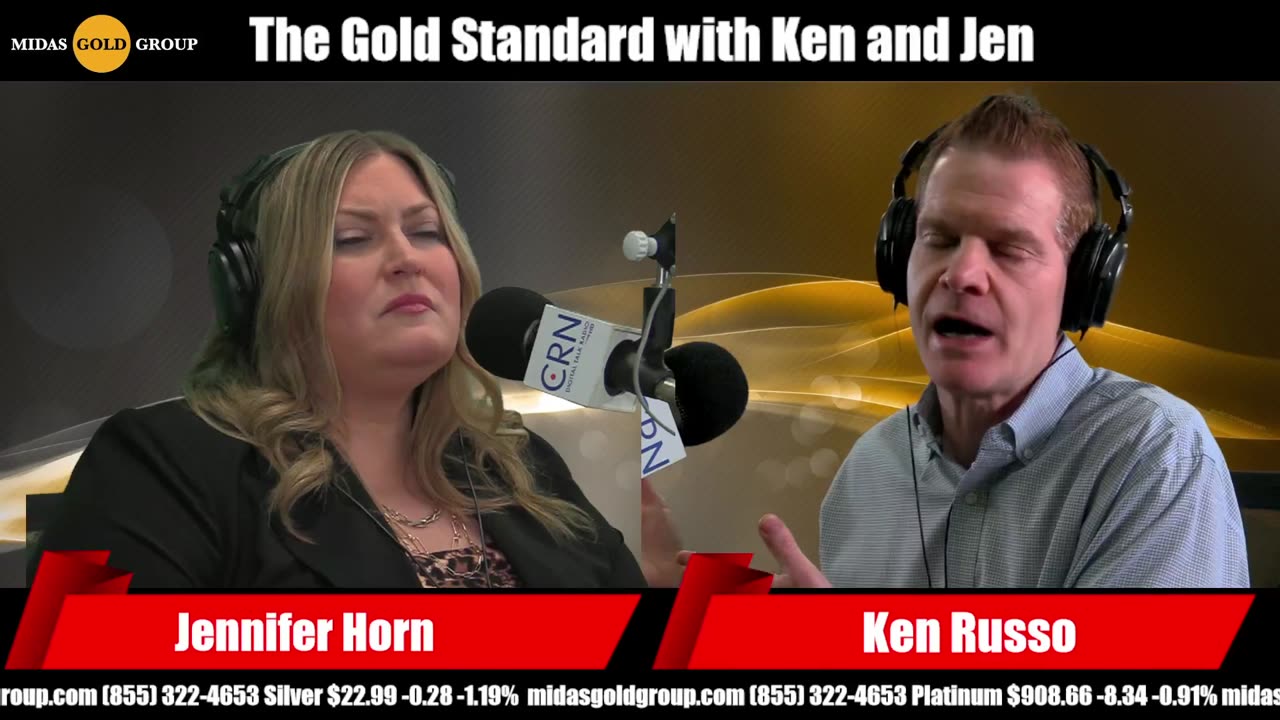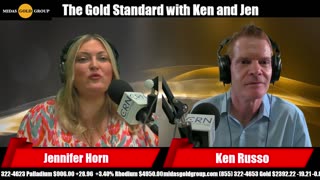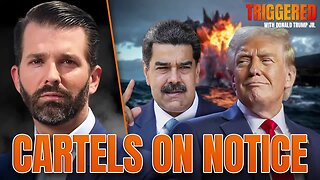Premium Only Content

Debts and Deficits | The Gold Standard 2403
https://www.midasgoldgroup.com/
In this latest episode of The Gold Standard, hostess Jennifer Horn with her guest Ken Russo discuss the current state of the economy and crucial steps you can take today to safeguard your spending power. They’ll explain why clinging to paper assets may not be the most secure way to preserve wealth. But before we delve into the present-day economic landscape, let’s rewind to a pivotal moment in history – the Nixon Shock of 1971 – when President Nixon forever altered the relationship between the US dollar and gold.
From Precious Metals to Fiat Currency
In the past, the US dollar was pegged to precious metals such as gold and silver. These tangible assets provided a solid foundation, giving the currency intrinsic value and a sense of security. However, times have changed, and today, the US dollar stands on a radically different footing. No longer backed by the glittering assurance of gold and silver, the dollar relies solely on the intangible pillars of trust and confidence in the government. This shift has transformed the dollar into a fiat currency, whose value comes from people’s faith in the government’s ability to manage its monetary policies and maintain economic stability. It’s a fundamental change that underscores the importance of understanding the dynamics in today’s financial world and the role that precious metals like gold continue to play in safeguarding wealth and preserving economic security.
The Alarming Rise of the US National Debt
The current state of the US National Debt is nothing short of alarming, standing at a staggering $34 trillion. To put this in perspective, just over two decades ago, in 1999, it was a comparatively modest $5.6 trillion. This exponential growth demands our attention for several crucial reasons. First, it’s a trajectory that shows no signs of slowing down, raising concerns about the nation’s fiscal stability. The US is now on the brink of joining a rather unenviable club, as since 1800, 51 out of 52 countries that crossed the 130% gross government debt threshold have experienced high inflation, default, restructuring, or devaluation. The pace of this debt increase is startling, with the government accumulating $340 billion more each week. As individuals, the national debt impacts us directly, with each taxpayer carrying a share of approximately $264,000. The interest alone, a daunting $1.8 billion per day, emphasizes the gravity of the situation. To put it into perspective, $34 trillion surpasses the combined value of the economies of China, Japan, Germany, and the United Kingdom. These numbers underscore the urgency of understanding the implications of such debt levels and why they matter for the financial well-being of every American citizen. Ken Russo’s poignant question, “How long until the bubbles begin to burst?” echoes a growing concern in the financial world. Today, we witness enormous bubbles inflating the debt market, the real estate sector, and various other segments of the economy. Years of low interest rates and unprecedented monetary stimulus fuel these bubbles. The real estate market, in particular, has experienced soaring prices, with housing bubbles emerging in many regions. The debt market, on the other hand, has seen an expansion in corporate and government debt, reaching levels that could become unsustainable. Understanding the dynamics of these bubbles and their implications is essential for investors and individuals alike as we navigate an increasingly uncertain financial landscape.
BRICS Nations Challenge the Dominance of the US Dollar
The BRICS coalition of Brazil, Russia, India, China, and South Africa is gaining remarkable traction, fueled by mounting discontent with the US dollar’s role as a geopolitical weapon. These nations actively pursue alternatives to lessen their reliance on the dollar-centric global financial system. Initiatives such as the New Development Bank and bilateral trade agreements conducted in local currencies signify their determination to diversify. This upsurge marks a broader global shift towards a more multipolar financial landscape, questioning the long-established supremacy of the US dollar. Since the epochal Bretton Woods Conference in 1944, the dollar’s status as the world’s primary reserve currency granted the US unique advantages, including cheaper financing and substantial leverage through financial sanctions. However, as the BRICS group expands beyond its original five members to include others, our currency landscape may be poised for a seismic shift, introducing heightened volatility to the Treasury market, exchange rates, inflation, and more.
How Does Gold Protect You?
In these uncertain times of economic turbulence, it’s crucial to recognize the timeless role that gold plays in safeguarding your buying power. Unlike fiat currencies that can be devalued by excessive printing, gold’s intrinsic value endures. Its scarcity, universal acceptance, and historical track record as a hedge against inflation and economic instability make it an essential asset for preserving and protecting wealth.
________________________________________________________________________________________________________
Listen to The Gold Standard: https://www.midasgoldgroup.com/gold-standard-radio-show/
Gold IRA: https://www.midasgoldgroup.com/gold-ira/
Invest in Gold: https://www.midasgoldgroup.com/buy-gold/
Guide to Owning Bullion & Coins: https://www.midasgoldgroup.com/bullion-guide/
Read the latest precious metals news: https://www.midasgoldgroup.com/news/
-
 25:08
25:08
Midas Gold Group
1 year agoIf the System Collapsed, What Would Happen to My Money? | The Gold Standard 2432
59 -
 LIVE
LIVE
SpartakusLIVE
2 hours agoNONSTOP Snipes, Rockets, and BICEPS = Monday MOTIVATION
213 watching -
 LIVE
LIVE
JakRazGaming
3 hours agoPlaying Minecraft with GameQuest1552, Rexmon, and JuicyKinnKandy! Stream 16
55 watching -
 24:02
24:02
The Quiet Part
4 hours agoOur Court Failed Us - In The Name of Tolerance
6.55K6 -
 LIVE
LIVE
LFA TV
22 hours agoLFA TV ALL DAY STREAM - MONDAY 9/8/25
815 watching -
 1:01:36
1:01:36
BonginoReport
4 hours agoNationwide Crime Spree Amid Trump Crackdown (Ep. 129) - Nightly Scroll with Hayley 09/08/2025
68.2K32 -
 36:23
36:23
MattMorseTV
2 hours ago $2.20 earned🔴Pritzker just GOBBLED UP Trump's BAIT.🔴
14.2K20 -
 11:52
11:52
TundraTactical
3 hours ago $0.12 earnedThIs Is The Most Dangerous Push For Gun Control You've Never Heard Of
7.51K -
 59:53
59:53
Donald Trump Jr.
3 hours agoProtecting Home Field: Cartels on Notice, Plus Biden Autopen Scandal Goes From Bad to Worse | Triggered Ep.273
48.3K62 -
 1:01:40
1:01:40
The Nick DiPaolo Show Channel
6 hours agoMedia Ignores Slaughter of White Woman | The Nick Di Paolo Show #1789
38.8K26